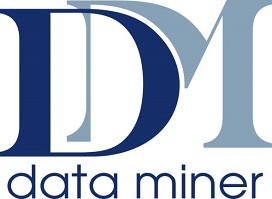Overview
Mastering Power Automate is a 3-day advanced training class designed for students who are ready to move their Power Automate skills with cloud flows to the next level. Students will cover topics necessary for building more complex flows as well as look at best practices for creating and maintaining cloud flows.
Please note – Under the umbrella term of Power Automate, Microsoft include three- types of processes: Cloud Flows, Business Process Flows and Desktop flows (also known as Power Automate RPA). This course exclusively looks at Power Automate cloud flows (the product previously known as Microsoft Flow) and uses generic Office 365 data sources (i.e. not Dataverse) for examples.
For training on Business process flows (and the associated Dataverse environment that they exist in, please refer to course Mastering Power Platform Dataverse and Model-Driven Apps (QAMPMOD).
For training in Desktop flows, please refer to course Microsoft Power Automate RPA Developer.
Due to the dynamic nature of updates to Office 365 functionality by Microsoft, elements of the syllabus of this course can be subject to change without notice.
Prerequisites
Before attending this course, learners should have:
- A general knowledge of using Office 365
- Some experience of basic SharePoint administration
- Attended QA’s Power Automate Essentials course, or have equivalent knowledge
- Some additional experience creating flows
- Some knowledge of JSON would also be useful, but is not essential
Please Note: If you attend a course and do not meet the prerequisites you may be asked to leave.
Delegates will learn how to
Delegates will learn how to
- Work with variables, conditions, and loops
- Work with functions and expressions
- Use Adaptive Cards to enhance the user experience
- Enhance the build-in approval process
- Use the SharePoint REST API for advanced SharePoint tasks
- Integrate Power Automate flows with Power Apps
- Apply Power Automate design best practices
- Handle flow run-time errors
- Utilise Parent – Child flows
- Use the Microsoft Graph API with Power Automate
Outline
Module 1 – Power Automate Essentials
- What you should already know
- Working with dynamic content and expressions
- Referencing trigger information
- Referencing action information
Lab 01 – Preparation tasks
Module 2 – Variables, Conditions and Loops
- Variables
- Conditions
- Loops
Lab 02 – Conditions and loops
Module 3 – Functions and Expressions
- Reasons to use expressions
- Anatomy of a function
- Basic and advanced expressions
- Where can expressions be used
- Expression editor
- Functions
- Expressions or actions
Lab 03 – Functions
Module 4 – Working with Adaptive Cards
- Why use Adaptive Cards
- Adaptive Cards designer
- Using an Adaptive Card
Lab 04 – Adaptive Cards
Module 5 – Advanced control properties and OData
- OData
- Common advanced settings
- Advanced trigger settings
- Advanced action settings
Lab 05 – Advanced properties
Module 6 – Advanced Approvals
- Approval options
- Custom responses
- Approval limitations
- Adding reminders to approvals
- State pattern
Lab 06 – Advanced approvals
Module 7 – Using the SharePoint HTTP action
- Making an HTTP request to SharePoint
Lab 07 – SharePoint HTTP action
Module 8 – Integration with Power Apps
- The flow
- Calling the flow from Power Apps
- Capturing returned data
Lab 08 – Working with Power Apps
Module 9 – Best practices and handling errors
- Documentation
- Optimising flows
- Keep flow configurations generic
- Handling errors
Lab 09 – Handling errors
Module 10 – Parent and child flows
- Parent / Child flows general principal
- HTTP Method
- Using a Solution
Lab 10a – Child flows: HTTP action
Lab 10b – Child flows: solutions
Module 11 – Using the Microsoft Graph API
- Steps to use the Microsoft Graph API
Lab 11 – Using the Microsoft Graph API

